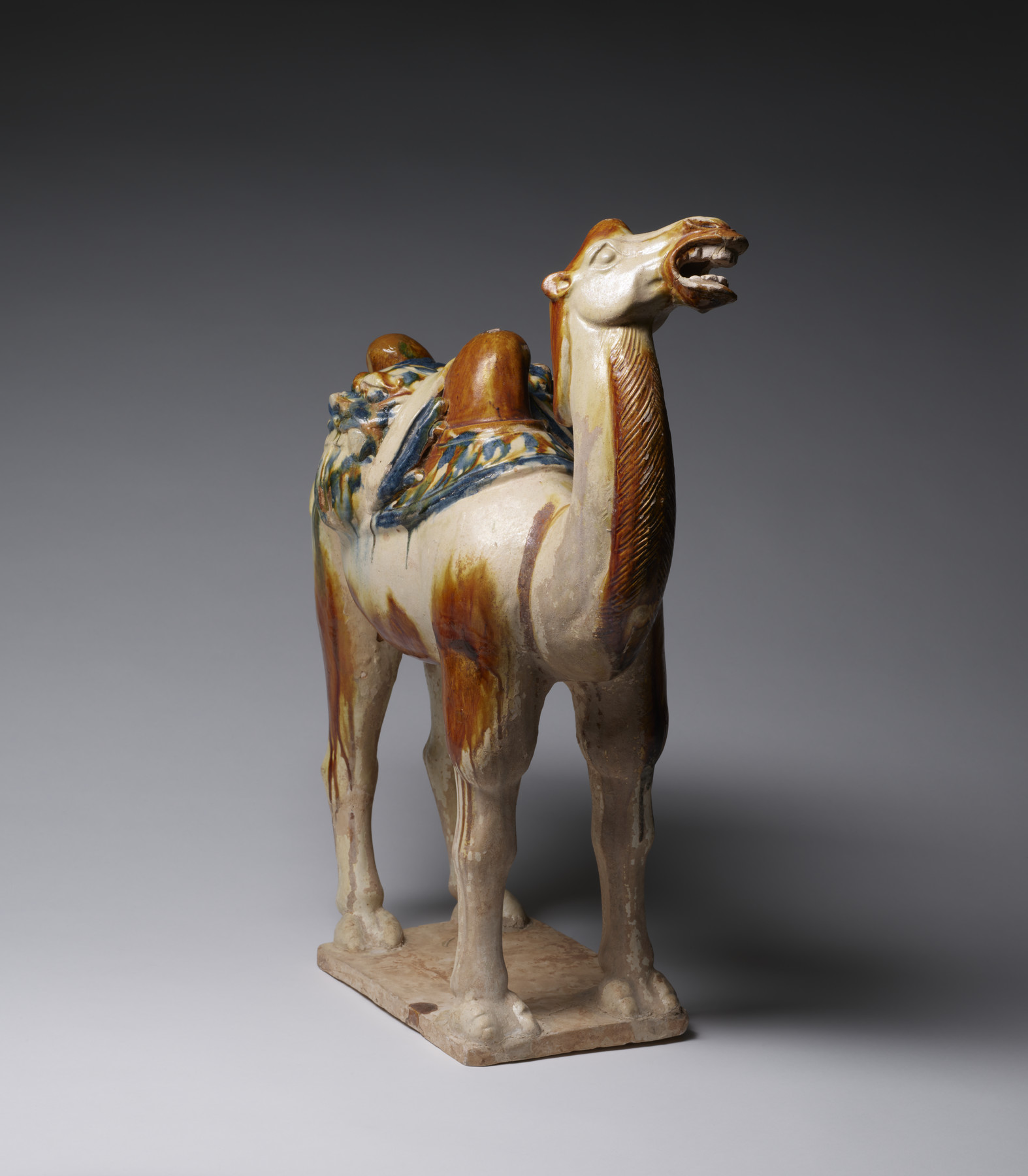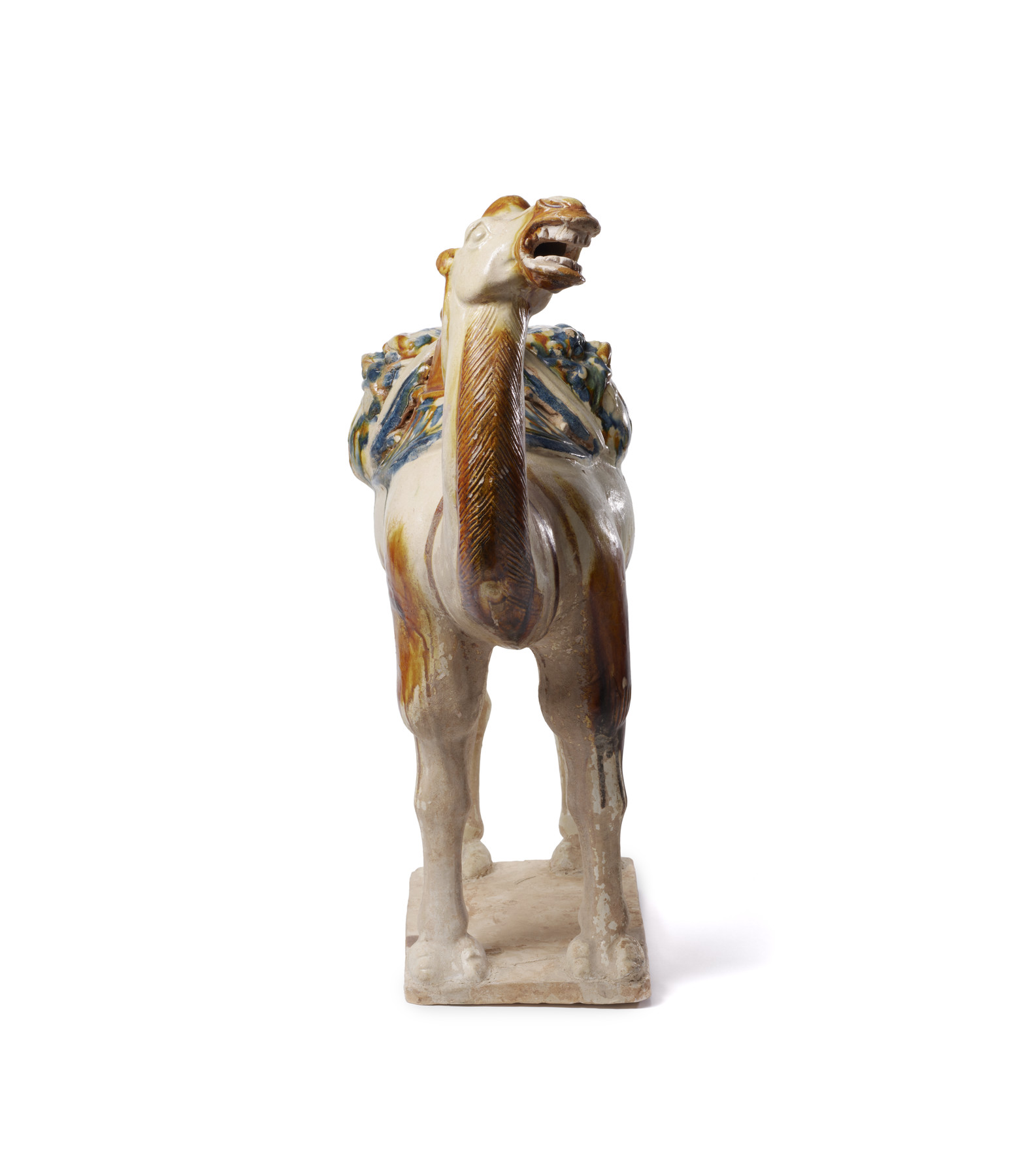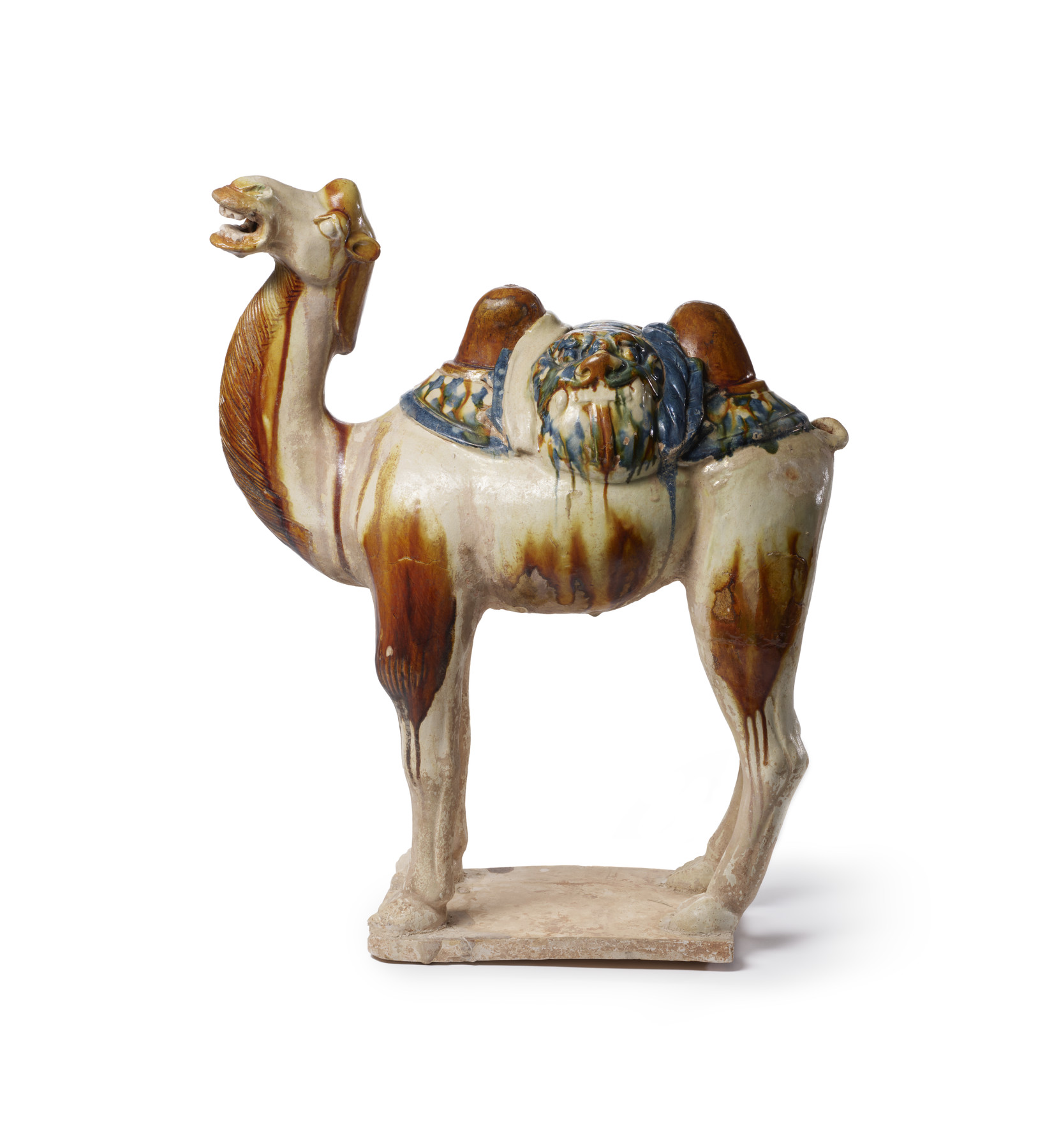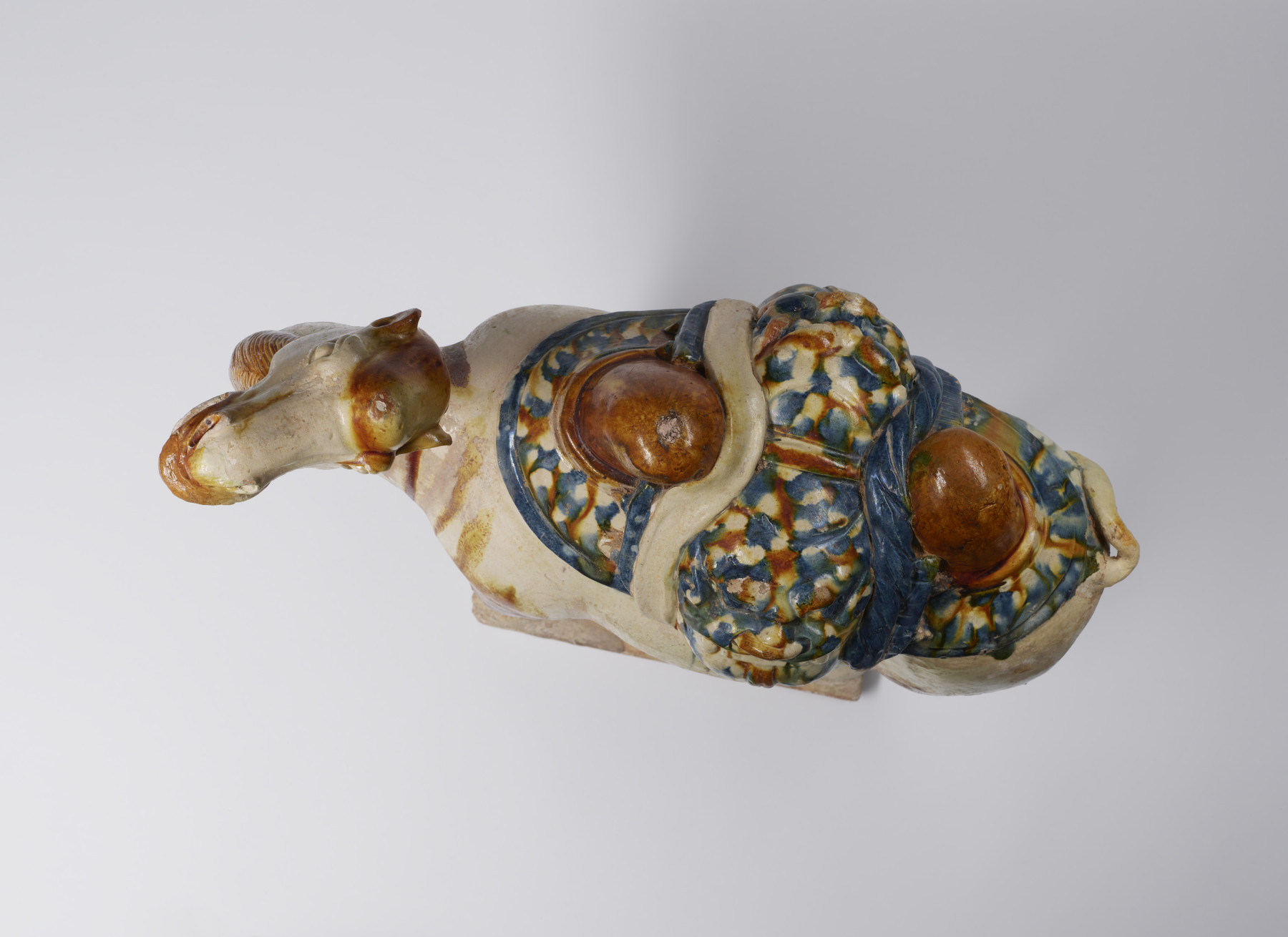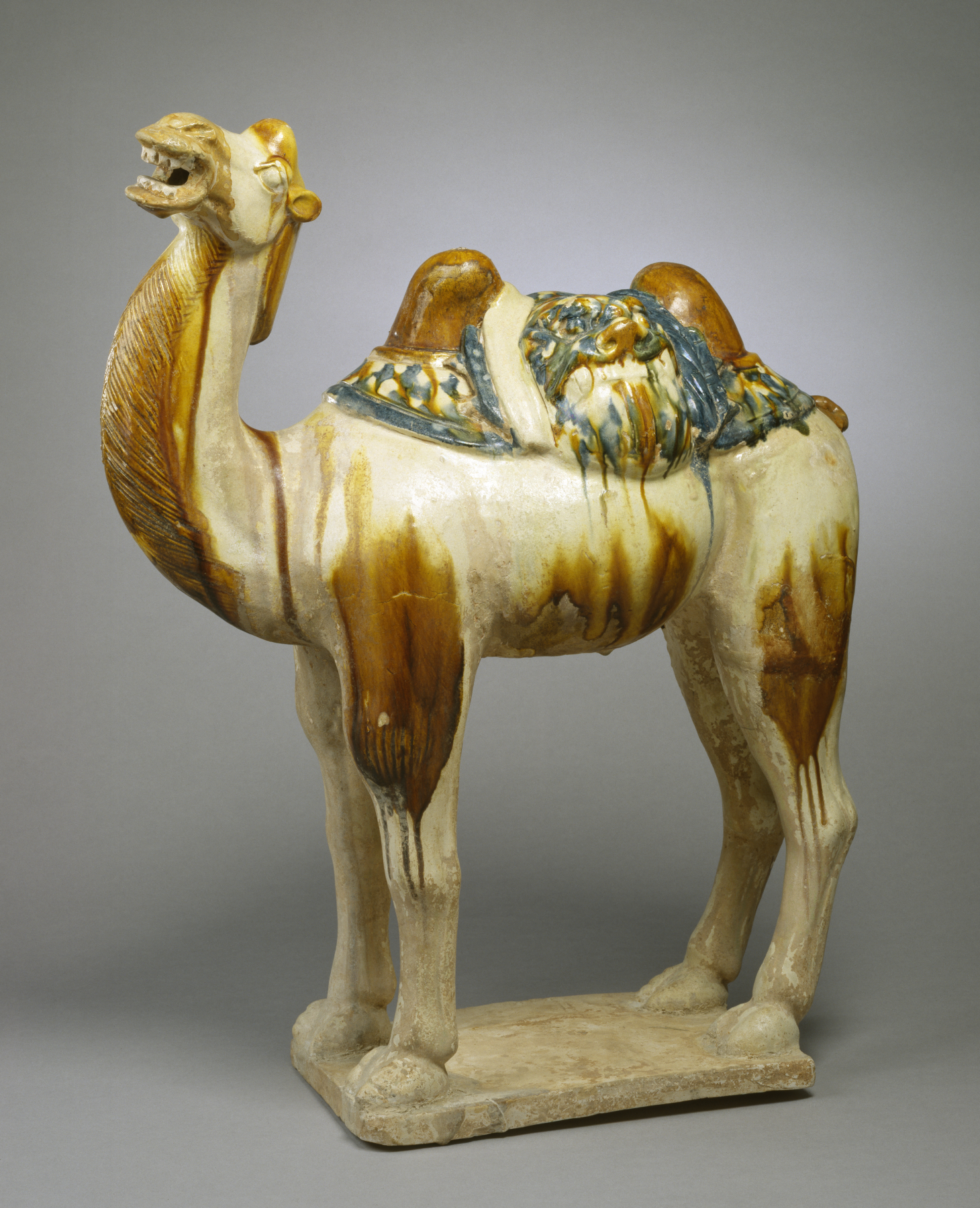Camel
(China )
This sculpture depicts a lively camel with two humps. Like the horse, the camel was perhaps an even more potent symbol of commerce, exchange, and travel between China and the many kingdoms and cultures across the northwest deserts of Asia during the Tang dynasty (618–907). All kinds of raw materials and export goods—like silks, spices, ceramics—were carried across the continent on the backs of camels and via caravans along the so-called Silk Roads. While this camel was made for a tomb and therefore did not literally travel, it embodies the kinds of exchanges that characterized life during the Tang dynasty.
Provenance
Provenance (from the French provenir, 'to come from/forth') is the chronology of the ownership, custody, or location of a historical object. Learn more about provenance at the Walters.
C. K. Chang, Philadelphia [date and mode of acquisition unknown]; Walters Art Museum, 1949, by purchase.
Conservation
| Date | Description | Narrative |
|---|---|---|
| 10/17/1974 | Treatment | cleaned; loss compensation |
Geographies
China (Place of Origin)
Measurements
H: 22 7/16 x L: 17 7/8 x D: 8 in. (57 x 45.4 x 20.3 cm)
Credit Line
Museum purchase, 1949
Accession Number
In libraries, galleries, museums, and archives, an accession number is a unique identifier assigned to each object in the collection.
In libraries, galleries, museums, and archives, an accession number is a unique identifier assigned to each object in the collection.
49.2383

